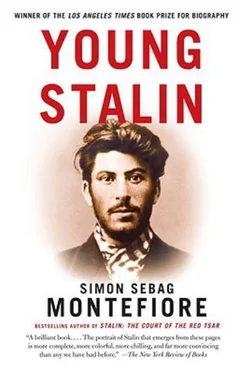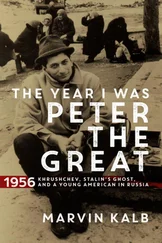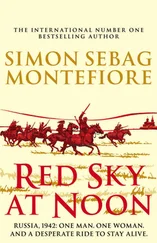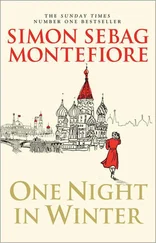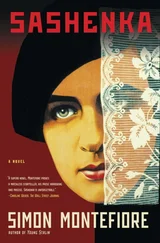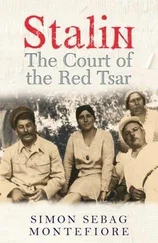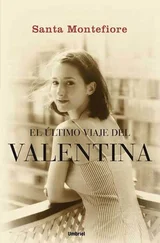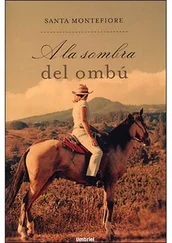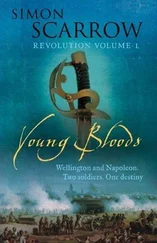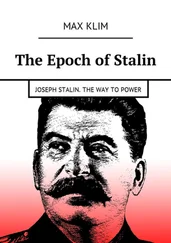The chief jailer there was named Serov, ironically the father of the future General Ivan Serov, one of Stalin’s top secret policemen, deporter of the Chechens and other peoples, and first KGB Chairman.
Soso befriended the post-office clerk who doubled as a jailer and whom he had met when he picked up his money orders. Soso liked to hunt alone in the forests during the summer and would meet the postman-jailer to pass him notes that he would deliver to the prisoners in the local prison. The local priest let Stalin use his library.
See the Epilogue.
The secret police adapted their own witty code names for their surveillance targets: a baker would be “Bun,” a banker “Moneybags,” the poet Sergei Esenin was “Typesetter,” while a pretty girl might be “Gorgeous” or “Glamourpuss.”
Just as he was to despise the happy marriages of his grandees in power, after the suicide of his second wife in 1932. See Stalin: The Court of the Red Tsar .
Until recently, historians repeated that Beso had died about 1890, perhaps in a bar brawl, but the new archives disprove this. Once in power, Stalin’s henchmen and historians tried to find photographs of Beso and showed them to the dictator for identification: the Georgian Party archives contain piles of photographs of local cobblers and Beso candidates. One photograph probably is Beso for it was displayed in the cult museums, but Stalin himself refused to identify it. The local Party bosses also tried to find Beso’s grave but failed there too. In the 1940s, Elisabedashvili, who survived the Terror, presented Stalin with a clock that he claimed had belonged to Beso. Stalin refused to accept it, implying that someone else, probably Egnatashvili, was his real father. He preferred this gap in his life to any hint of the man himself.
Gio’s memoirs are remarkable because they were published in the Soviet Union in 1925, just after Lenin’s death but before Stalin had established his dictatorship—virtually the only moment in Soviet history when this could have happened. The book came out in Leningrad, then the fiefdom of Zinoviev, who presumably permitted this as a warning to Stalin, with whom he was competing for Lenin’s throne. Gio reveals that the Georgian police interpreter betrayed the Tsarist state not because he was a Marxist but because he was a Georgian “nationalist.” Gio also recounts how Stalin gave him code words to contact another comrade named Kornev, who turned out to be so suspicious that he was probably a police agent. Gio believed that this Kornev had tricked Stalin, but it is equally possible that Stalin was testing or sacrificing Gio, or that he was in the process of recruiting Kornev.
Sometimes the police set the price too high. “My dear,” wrote an unknown Bolshevik, “unfortunately I cannot help you. The official asks 800 roubles for cancellation abroad [this meant going abroad instead of into Siberian exile] for Yakov Mikhailovich [Sverdlov]. Where to get this sum?”
A major piece of evidence that Stalin was an Okhrana agent was a probable forgery, the so-called Eremin Letter, that appeared in the 1920s and was published by Life magazine in the 1950s, forming the backbone of the conspiracy-theory books by I. D. Levine and E. E. Smith. Colonel Eremin was indeed the head of the Tiflis Okhrana from February 1908. The letter was clearly drafted by someone who knew a lot about Stalin and the Okhrana, but it contained a series of mistakes of detail. While appreciating Stalin’s amorality, it also grasped his devotion to the cause, claiming that he was an unsatisfactory agent because in the end he was a fanatical Marxist. When the Eremin Letter was published in Life after Stalin’s death, his successor, First Secretary Nikita Khrushchev, and the Politburo ordered the KGB Chairman, General Serov, to analyse its veracity. His investigations, recently found in the archives, also conclude that it was a forgery. As for the theory that the Great Terror was Stalin’s effort to suppress evidence of his Okhrana links, The Secret File of Joseph Stalin by Roman Brackman (2001) puts the argument robustly.
Stalin’s presence as an exile would return to haunt this region. In 1940, he ordered the construction of a giant steel-mill in Cherepovets because he remembered it from his Solvychegodsk exile, even though it was totally unsuitable: the nearest iron-ore and coal deposits were over 1,000 miles away. But his advisers were too frightened to tell him. The Second World War delayed construction, but building started in 1949. Due to its inconvenient location, it is still known as “Stalin’s Belch.”
In the early 1920s, Ivanian had the misfortune to literally bump into Stalin in Moscow and he apparently did ask for his help. On 7 June 1926, when he was already the dominant Soviet leader, Stalin was consulted on Ivanian, then an official with the Commissariat of Internal Trade. “In response to your inquiry, I notify you of the following facts that you need to know,” Stalin wrote in his characteristic numbered paragraphs. Point Six concluded: “Later after I went abroad, I received all the Central Committee documents proving that 70 roubles had been sent to me… [and] the money was not lost but received by the addressee in Vologda.” Ivanian was expelled from the Party but reinstated after Old Bolsheviks interceded for him. When Stalin unleashed the Terror, the Transcaucasian boss and secret policeman Beria pursued him. Ivanian wrote desperately to the dictator: “I still declare I had nothing to do with the 70 roubles… Please help clear my name.” He was ironically exiled back to Vologda, then transported to Tiflis and executed.
The son, Constantine, was born after Stalin’s departure. Kuzakova left memoirs during the dictatorship that naturally did not contain a confession of their affair., but on balance, it seems that the baby was Stalin’s son. The dates on the birth certificate do not tally, but, as with Yakov Djugashvili and indeed Stalin’s own movable birthday, such documents were often pre-dated or forward-dated. Such events were in any case registered very casually in those days, especially in tiny villages far from Petersburg. Soso made no attempt to meet the child, but, unusually, the boy was later brought to Moscow, given a favoured job in the Central Committee apparat, and protected. He had an interesting career. Given the mother’s insistence, Stalin’s acquiescence in the child’s later career, and his wife Nadya Alliluyeva’s knowledge of the affair, it seems probable the dictator knew Constantine was his son. See the Epilogue.
In 1944, the secret police confiscated her copy of this book along with postcards from Stalin. See the Epilogue.
His other, considerably less glamorous correspondent there was a stolid and bespectacled Bolshevik of just twenty-two who had been in exile in Solvychegodsk just before him. His name was Vyacheslav Scriabin, later “Molotov,” who became his longtime political henchman. Molotov heard that Stalin was known as the “Caucasian Lenin.” He was musical and could play the violin and mandolin. He earned one rouble a day by playing mandolin for rich merchants and their molls in the local restaurant and in the new cinema there. Stalin regarded this as beneath him as a Bolshevik. Later he taunted Molotov, “You performed for drunk merchants—they smeared your face in mustard!” Scriabin did not adopt his “industrial name” Molotov until 1914. At this time he was called Ryabin, Zvanov, Mikhailov and V.M., though the Okhrana called him “the Runner” because he walked so fast.
Читать дальше
